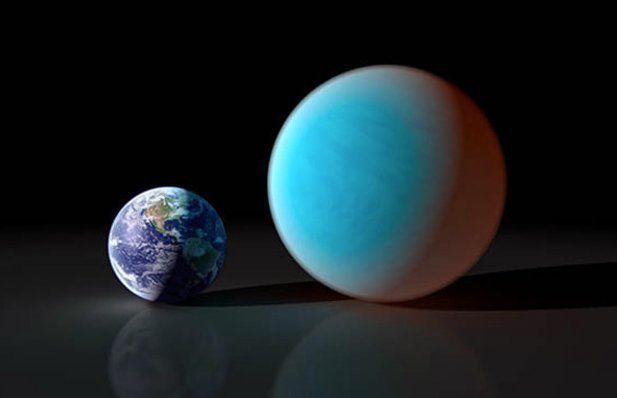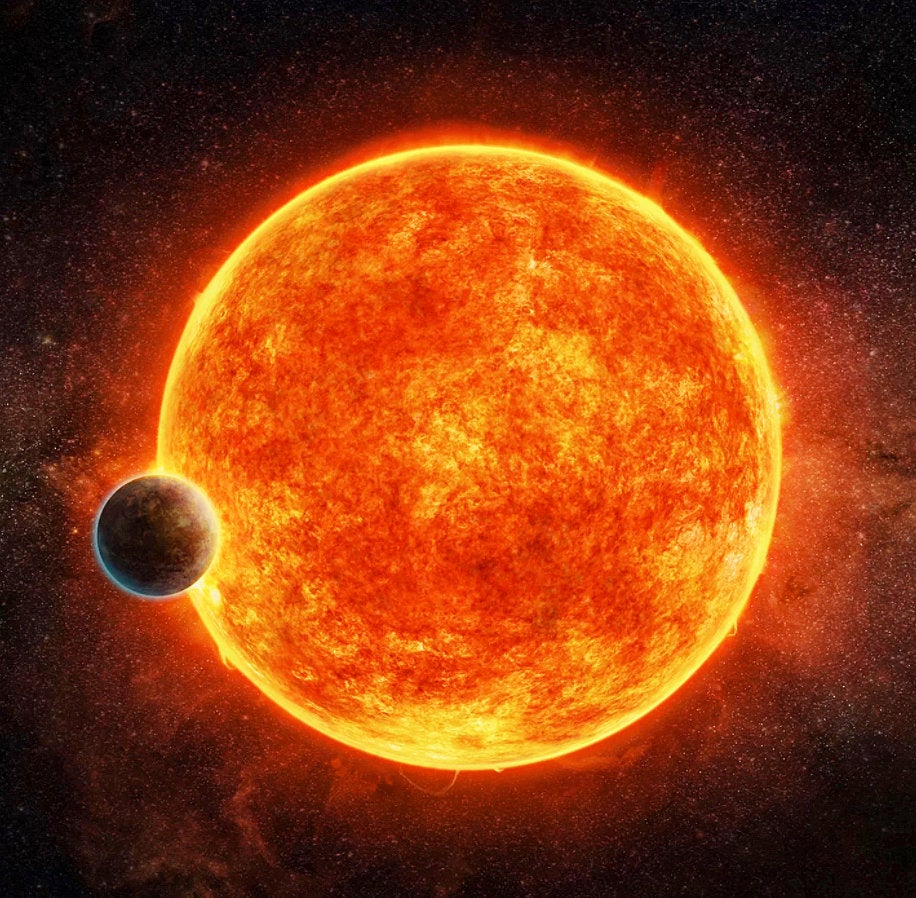
By Sid Perkins
Some "super-Earths" will never evolve to resemble our planet, a new study suggests. Researchers looked at seven of these worlds—distant planets whose mass lies between one and 10 times ours—including 55 Cancri e (at right, compared to Earth) and GJ1214b, evaluating how the x-ray and extreme ultraviolet radiation emitted by their parent stars might affect their atmospheres over their remaining lifetimes.
Even though many of the planets orbit their stars very closely and have high temperatures, which in turn causes their hydrogen-rich atmospheres to expand and a fraction of the gases to escape the planet over time, it's unlikely that the planets will lose enough of their atmosphere to become rocky bodies like Earth, the researchers report online today in the Monthly Notices of the Royal Astronomical Society.
And if any planets similar to these orbit in their parents stars' habitable zone, substantially farther from the home star where liquid water might more likely exist, their atmospheres will lose even smaller amounts of hydrogen-bearing compounds over time, the researchers note.
So, instead of thinking of these planets as super-Earths, astronomers should probably think of them as "mini-Neptunes"—a planet in our solar system that weighs about 17 times the mass of Earth and is swaddled in hydrogen-rich gases. Even if these mini-Neptunes never become habitable, however, many scientists have previously proposed that any smaller, rockier Earth-sized moons orbiting the gas giants could nevertheless host life as we know it.
ScienceNOW, the daily online news service of the journal Science
